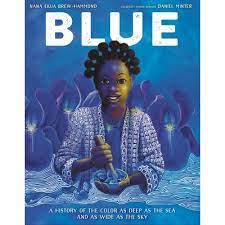You can crush iris petals for a brilliant shade, but just add water, and away it fades.
But then blue appears in the strangest places, discovered throughout history
in unexpected ways.
As early as 4500 BC, diggers found blue rocks called lapis lazuli in mines deep below Afghanistan’s Sar-e-Sang valley.
Ancient Egyptians used the rocks mostly to make jewelry. Some wore them as charms, believing they had the power to protect people from evil. But with time, they found new ways to use this underground find.
By 44 BC, many Egyptians, including Queen Cleopatra VII, were applying a bluish mixture around their eyes that looked like eye shadow, made with ground lapis lazuli grains, plants, and animal fat.
More than 600 years later, artists began painting sculptures, walls, and canvases with blue from the crushed rocks, too.
It was a royal pain for those who made the paint, and so expensive, only the wealthy could buy it.
Comprehension Questions
1. What were the blue rocks found in 4500 BC?
A. Sapphire
B. Lapis lazuli
C. Turquoise
A. It was a mixture of blue paint.
B. It was actually bruises.
C. It was a mixture of lapis lazuli, plants and animal fat.
Your Thoughts
Vocabulary
4. List any vocabulary words below.

